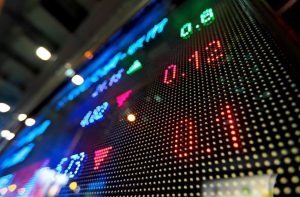As of Friday close, Dollar General Corporation’s (NYSE:DG) stock was down -$1.62, moving down -1.48 percent to $108.14. The average number of shares traded per day over the past five days has been 5,569,260 shares. 2 times new highs have been achieved over the past 5 days, with a -$7.54 fall in that time frame. In the last twenty days, the average volume was 5,908,415, while in the previous 50 days, it was 3,592,840.
Since last month, DG stock retreated -31.78%. Shares of the company fell to $107.72 on 09/22/23, the lowest level in the past month. A 52-week high of $261.59 was reached on 01/06/23 after having rallying from a 52-week low of $109.75. Since the beginning of this year, DG’s stock price has dropped by -56.09% or -$138.11, and marked a new high 2 times. However, the stock has declined by -58.66% since its 52-week high.
DG stock investors should be aware that Dollar General Corporation (DG) stock had its last reported insider trading activity 107 days ago on Jun 08. CALBERT MICHAEL M, the Director of the company, purchased of 6,000 shares for $155.44 on Jun 08. It resulted in a $932,638 investment by the insider. CALBERT MICHAEL M added 2,500 shares at an average price of $155.25 on Jun 08. The insider now owns 116,682 shares following the transaction. On Jun 06, Chief Executive Officer Owen Jeffery bought 1,500 shares at $157.86 apiece. The transaction was valued at $236,792.
Valuation Metrics
Right now, Dollar General Corporation (DG) has a P/E ratio of about 11.08. The stock’s beta is 0.35. Besides these, the trailing price-to-sales (P/S) ratio of 0.62, the price-to-book (PB) ratio of 3.77, and the price-to-cash flow ratio of 258.20 may also be considered.
The latest dividend of $0.59 per share was paid out, remained unchanged from last year’s $0.59.
Financial Health
In the three months ended July 30, Dollar General Corporation’s quick ratio stood at 0.10, while its current ratio was 1.40, showing that the company is not able to pay off its debt. According to company report, the long-term debt-to-equity ratio for the quarter ending July 30 was 1.16, and the total debt-to-equity ratio was 1.16. On the profitability front, the trailing twelve-month gross margin is 31.00% percent. In the year ended July 30, EBITDA margin amounted to 10.72%, whereas operating margins totaled 8.00%. Based on annual data, DG earned $11.82 billion in gross profit and brought in $37.84 billion in revenue.
A company’s management is another factor that investors consider when determining the profitability of an investment. In the past year, return on investment (ROI) was 20.90%. Return on equity (ROE) for the past 12 months was 36.30%.
In Dollar General Corporation’s quarter-end financial report for July 30, it reported total debt of $7.3 billion. According to the earnings report, the company had a higher net income in the recent quarter than it did in the previous quarter. DG’s revenue rose 3.78% to $9.34 billion during the quarter, while net income inched up to $9.8 billion. While analysts expected Dollar General Corporation to report $2.46 quarterly earnings, the actual figure was $2.13 per share, beating the consensus estimate by -13.40%. During the quarter, the company generated $900.69 million in EBITDA. The liabilities of Dollar General Corporation were 24.1 billion at the end of its most recent quarter ended July 30, and its total debt was $18.04 billion. The value of shareholders’ equity is $219.48 million.
Technical Picture
This quick technical analysis looks at Dollar General Corporation’s (DG) price momentum. With a historical volatility rate of 24.36%, the RSI 9-day stood at 14.77% on 22 September.
With respect to its five-day moving average, the current Dollar General Corporation price is down by -6.52% percent or -$7.54. At present, DG shares trade -29.31% below its 20-day simple moving average and -50.87% percent below its 100-day simple moving average. However, the stock is currently trading approximately -34.72% below its SMA50 and -56.03% below its SMA200.
Stochastic coefficient K was 5.04% and Stochastic coefficient D was 6.30%, while ATR was 4.45. Given the Stochastic reading of 1.60% for the 14-day period, the RSI (14) reading has been calculated as 17.17%. As of today, the MACD Oscillator reading stands at -4.33, while the 14-day reading stands at -8.16.









